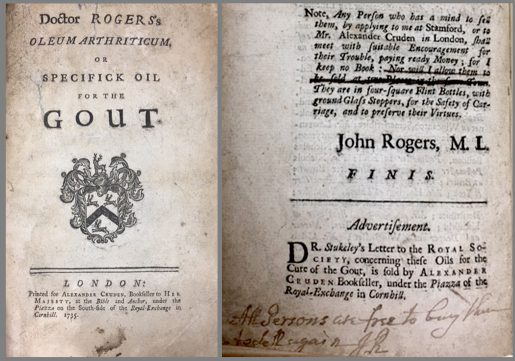The medical bibliography commonly known as Garrison-Morton originated as a checklist of texts illustrating the history of medicine. It was published by Fielding H. Garrison in 1933. Leslie T. Morton revised, updated, and annotated the checklist, and then published it as A Medical Bibliography in 1943. Each consequent edition brought this resource up to date, the last time in 1991 when Jeremy Norman assumed responsibility for the project. He saw the future of this bibliography in some electronic form even before the fifth edition was published (“The Future of the Garrison-Morton Bibliography,” Health Libraries Review, 1987, 4, 130-131).
Norman realized his idea in 2014 when he started to work on the current iteration of the bibliography, Jeremy Norman’s History of Medicine and the Life Sciences. He introduced not only the new format, but converted the bibliography into an interactive database freely available on the Internet. Because entry numbers had become established references, Norman preserved the decimal numbering system for original entries (1-6810), but any new additions simply get a new consecutive number (6811-onward).

He revised the scope of the bibliography by adding new subjects: molecular biology, sexuality, HIV/AIDS, homeopathy, ethnobotany, and graphic medicine. He expanded coverage of physicians’ travel and voyages, zoology, and veterinary medicine, and started to include electronic resources. There are more than 3,500 new entries since the last print edition. Many older ones have significantly revised annotations, updated birth and death dates, or new subject assignments. Norman also added the links to other sites pointing to authors’ biographies and digital facsimiles of the works.
The original arrangement of entries by class and chronology is partially lost in the online version. However, the inclusion of introductions and tables of contents for the previous versions gives the user some idea of the original arrangement. In addition, browsing the database with the help of indexes is more versatile. The site allows perusal by subject, author, year or place of publication, and by entry number. In addition to using the subject index to explore the resources, each entry has a list of related subject terms, which is another way of finding works on the same topic. The results are displayed in chronological order whether you use the subject, author, or place of publication browse.
~Gosia Fort




 Many university campuses offer pet therapy programs to reduce stress and promote student well-being, particularly around exam times when stress levels rise. Research exists to show the short-term psychological benefits of such therapy sessions. Therefore, HSLS recently collaborated with our 2nd year medical student well-being taskforce to pilot Falk Library as a location for dog therapy. In February and March, HSLS offered three dog therapy sessions, scheduled around study for the United States Medical Licensing Examination (USMLE) Step 1 medical board exams. Total attendance for all sessions reached nearly 60 and informal feedback was extremely positive, prompting us to offer another session open to all health sciences students in April, coordinated near final exams.
Many university campuses offer pet therapy programs to reduce stress and promote student well-being, particularly around exam times when stress levels rise. Research exists to show the short-term psychological benefits of such therapy sessions. Therefore, HSLS recently collaborated with our 2nd year medical student well-being taskforce to pilot Falk Library as a location for dog therapy. In February and March, HSLS offered three dog therapy sessions, scheduled around study for the United States Medical Licensing Examination (USMLE) Step 1 medical board exams. Total attendance for all sessions reached nearly 60 and informal feedback was extremely positive, prompting us to offer another session open to all health sciences students in April, coordinated near final exams.


